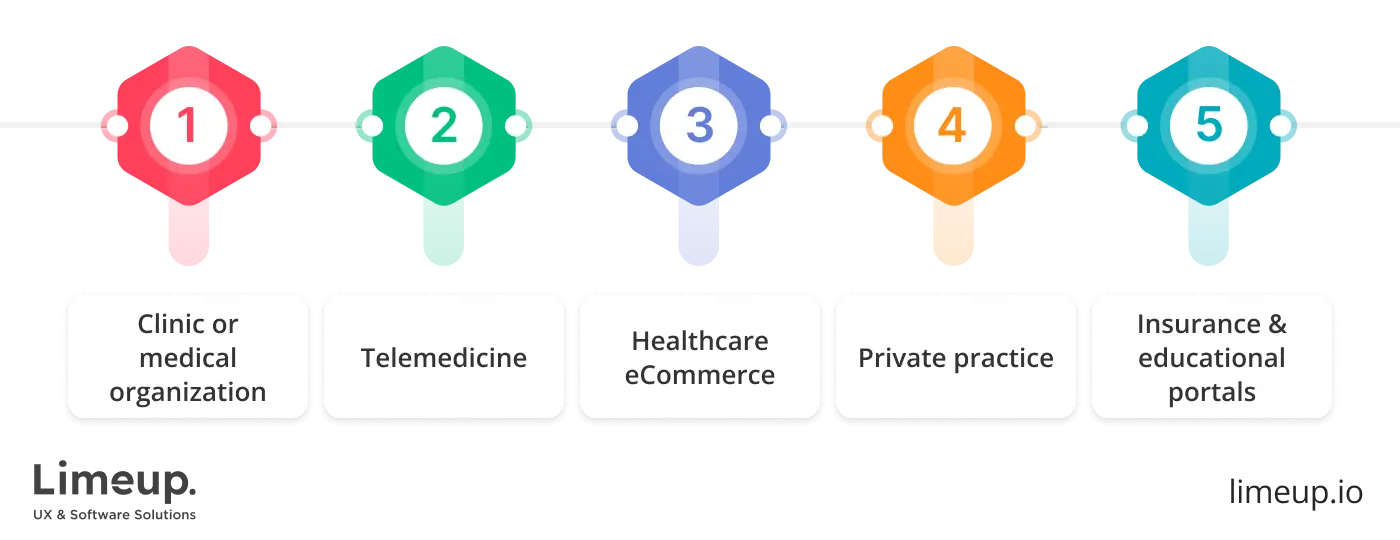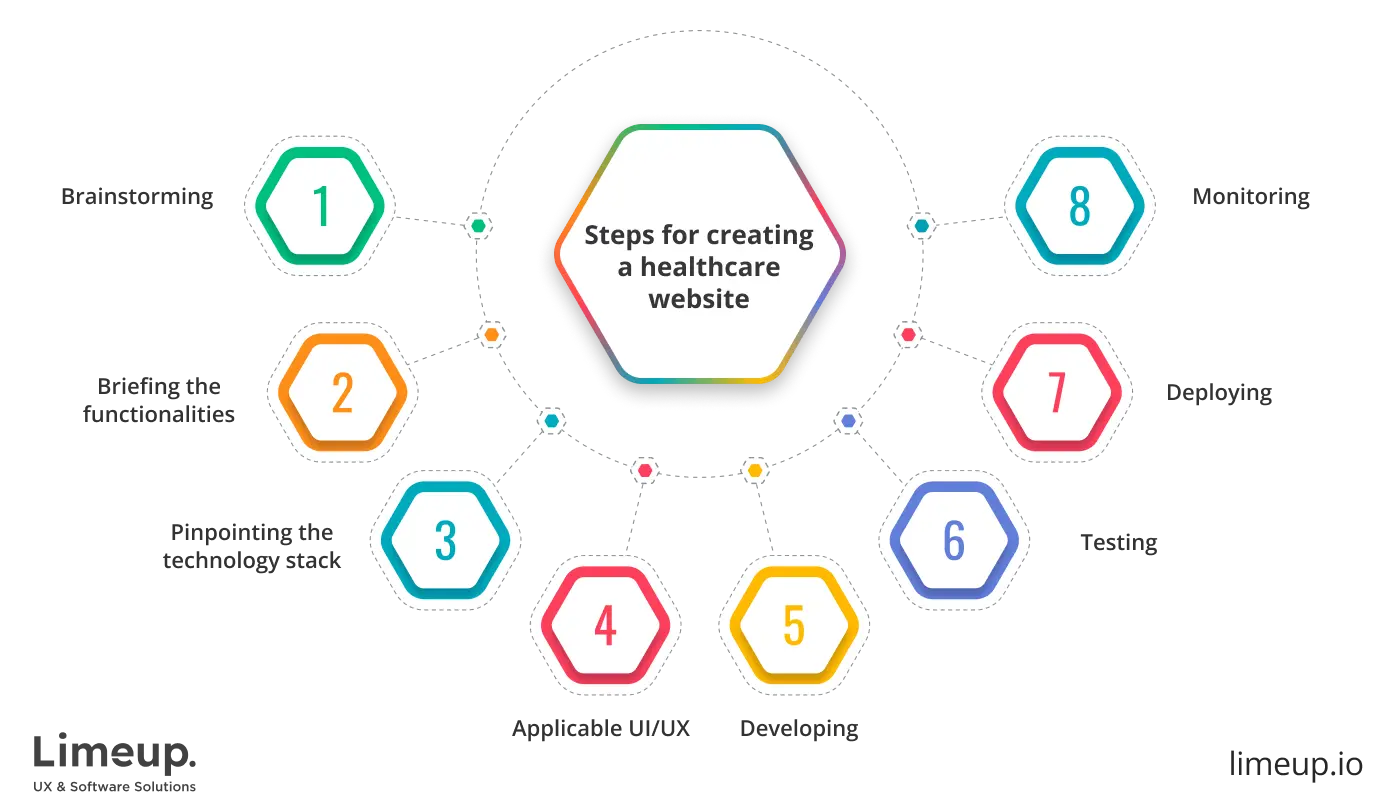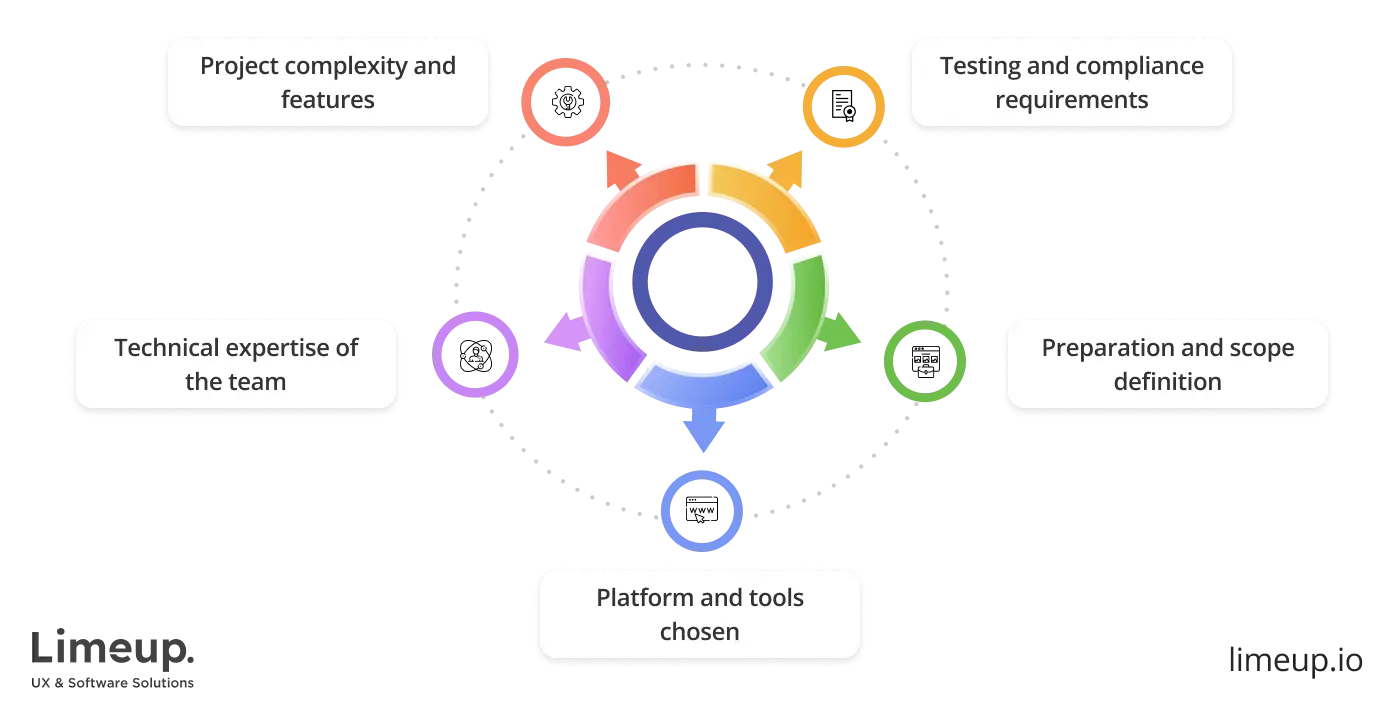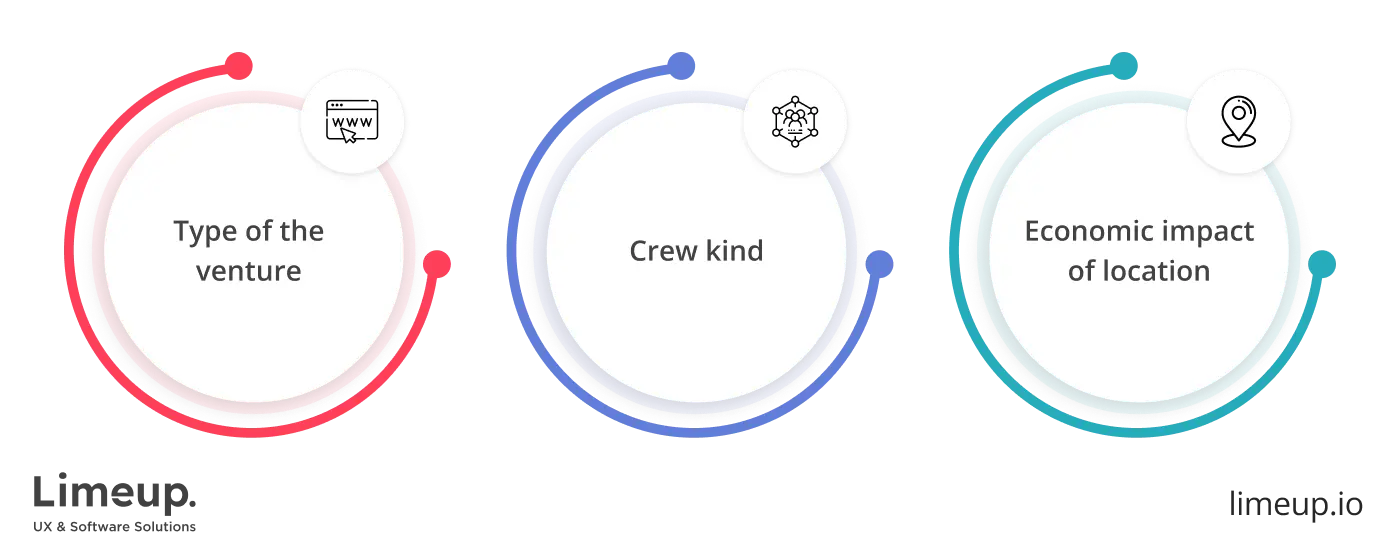Medical Website Development: an Extensive Breakdown

Healthcare website development revolutionizes hospital care by bringing accessibility and patient engagement to the forefront as the digitalization of the industry is paving the new way. We prepared a thorough guide for you to get acquainted with how to create sites that streamline checkup scheduling and telemedicine consultations, putting service efficiency on overdrive in the medical industry.
In addition to highlighting the essentials of medical website development, we applied ourselves to explaining how to build simple and advanced systems, outlined the functionalities of platforms and specified pricing information based on multiple criteria so that you could estimate approximate figures.
By launching healthcare web development, you’ll be capable of entering the next-generation era of clinical care, enhancing the experience of your clients and redefining treatment and productivity in management. Read all the way through to find out the approach to create a user-friendly site and explore our hospital solutions to gain the upper hand.
What is a healthcare website?
The variety of sites you can receive exceeds all expectations. They include pages designed to provide vital knowledge to beneficiaries, pharmaceutical stores, governmental supplies, educational hubs and sites where all kinds of reviews are presented to different audiences.
Having a plan to develop a healthcare website, keep in mind that help from professionals is vital. In this particular sector, the importance of adhering to the established compliances and regulations can’t be overlooked with the view to finalizing an initiative that carries its legal responsibilities. Such an endeavor must follow HIPAA compliance, GDPR regulations, ISO 27001, and others, depending on the area where the deliverer operates.
To ensure that the formation of your firm’s online presence is in accordance with the norms, one way stands for hiring specialists. Top-tier experts will not only ascertain that every facet of your venture is accomplished perfectly but will also bring their valuable expertise to meet the demands of your consumers and satisfy supervisory institutions.
In this guide, we will consider the ability to conduct healthcare software development, with all the nitty-gritty details, tips and tricks.
Types of medical websites
Contemplating what you can actually build, we can’t skip the comprehensive review, so let’s dive deeper into the sites that can be created, and their features/purposes, specifications, and more.

-
Medical organizations’ platforms have the stark architecture and number of features and pages which are essential for successful engagement with end-users. There are side categories that can be developed, for instance, you can get the general one-page lending with crucial information posted: data about doctors, certifications, care plans, etc.
Another standpoint is about so-called telemedicine resolutions when you craft a website with a few pages reflecting on services you offer, where visitors can sign up for consultations (virtual like Zoom meetings, chats or face-to-face), order an e-prescription for medications, etc.
-
The medical website development can be also represented across eCommerce healthcare portals if you are selling some goods related to drugs, hard software devices, supplements, medical face masks, or else. They are quite complicated as they require the catalog of staff where you post available meds.
-
If you are a private provider, then a personal website is your choice, with the ability to fulfill it with the required information. Based on our background, practitioners typically want to include the data that patients find helpful and not commercial, such as credentials, degree, ability to book an appointment online, review testimonials from previous clients.
Such sites are also protected according to the regulations by HIPAA so that the personal details entered in forms will be stored securely without access from third-parties.
- Insurance offers are part of building a healthcare website’s capabilities, where users choose the plan that fits their needs and receive consultancy on beneficial moments, policies, prices, and more allocations. Such a symbiotic resolution covers a few pain points simultaneously, allowing users to compare plans and choose what matches their vibe.
-
Blogs and educational resources are also part of the niche, aimed at sharing vital knowledge from doctors and scientists, or it can be tailored to experts who would like to remain on the same page with the latest updates in their area, for example, podiatry or general surgery.
Moreover, you are capable of building a site that will help patients ensure long-term or even life-long treatment, for instance, with diabetes or some mental illness. We also can not ignore the growing demand for additional education for students who need to learn a lot, and they always look for up-to-date articles, like the AMBOSS resource.
If you understand that the types above are not about your objectives — you can build whatever is required, with the proper tech stack and coders who combine result-driven mindset and strong experience.
News, study resources, telehealth, problem-oriented solutions, online drug stores — there are no limits when you know what you want, so let’s learn how to create such a portal in a few steps.
How to build a healthcare website?
By 2032, the market of the IT medicine sector is projected to reach $981.23b. Digitalization of this domain shows gradual growth, as does the quality of the assistance. The industry witnessed a rise due to the appearance of ML and AI enhancements, which powered personalization and robust defense.
Sticking to the meticulously polished plan of the virtual space setup helps generate more accurate results and reap the benefits of well-thought-out completion. Familiarize yourself with the flow we explained in our overview of medical website development services to be in the know of what to expect:

Step 1. Brainstorming
You approach the realization of your concept via an in-depth discussion of the missions, target people and purposes of your offerings. Do you want to deliver value to doctors? Are you oriented on giving consultations or selling pills? Does your app resolve pain points of the end-users?
Step 2. Briefing the functionalities
As soon as the type of your initiative is determined, it’s time to proceed to pick the core attributes and opportunities you will give your guests. At the end of this phase of digital healthcare web development, you’ll have your project’s statement ready, and neither you nor your partner, who will level up your Internet visibility, will wonder about the actions to take.
Step 3. Pinpointing the technology stack
When the objectives are clear, program architects select the instruments they need to turn your undertaking into a workable solution, beginning from the environment they will place your site on — WordPress, Wix, Shopify or a custom space and finishing with libraries.
Engineers specialized in medical web development choose a suite for server-side, in other words, back-end, including databases like Redis and languages, Python, Ruby, PHP along with opting for front-end frameworks, namely, Angular, Svelte and rendering methodologies, with a focus on ensuring accessibility.
Step 4. Designing applicable UI/UX
Healthcare software development providers‘ computing job starts with defining the look, paying precise attention to the aesthetics of the delivery so your recipients will have positive impressions. However, the beauty of the interface isn’t the only crux of the matter as its simplicity and friendly navigation, coupled with a predictable journey, play a pivotal role in prospects’ acceptance.
Being thoughtful about the behavior of those who will take advantage of the deliverables, graphic artists finalize their accomplishments, making the browsing hassle-free and intuitive.
Step 5. Developing
As the major points of the layout are formulated, a medical web developer moves to constructing the architecture, integrating the site with third parties, embedding security implementations and writing the code of the customized components. During this stage, they also evaluate the compliance of the end products with the standards and requirements.
Step 6. Testing
There’s no difference in how prominent the agency you cooperate with, when the visual and logic layers are refined, the outputs should be processed with the intention of spotting vulnerabilities and misalignment. Don’t skip this step when picking duties for executors to fulfill since the full cycle of construction includes checking that it runs.
Step 7. Deploying
The final draft of a healthcare web development company’s efforts remains on their computers until this period. That’s when tech savants publish the portal on the Internet, making it visible for search engines and users, as well as enabling businesses to collect important statistics to identify how well their audience engages with the website.
Switching the setup is another meticulous process, entailing detailed scrutiny since this procedure secures good API connections, proper database migration and the right content delivery. There are variations of rollout, Blue-Green, Canary and Feature Flags, and your innovative assistants will select those that are the most beneficial in your special situation.
Step 8. Monitoring
To stay relevant, the software demands to be adjusted to changes. If we compare the digital sphere to what it was ten years ago and how it looks now, we’ll see how it has evolved. It’s the same picture we will see after a while. To ensure your counselees’ impeccable experience, provide them with regular updates and fixes.
By confirming this simple roadmap, suppliers divide complex particles into smaller tasks that allow them to pay equal attention to every significant element.
What are the features of medical website development?
Getting started with your own dedicated instruments of online presence is no walk in the park and requires deep consideration of the modules you want to implement. After all, you don’t wish to be faced with the problem of biting more than you can chew, so let’s take a look at some of the critical elements we need to examine thoroughly we selected for our synopsis:

Patient records. The internet site sets the stage for maintaining electronic records with utmost accuracy and reliability. Vendors that handle such creation across the medical website design and development insert the following functionalities: the storage of data on conducted examinations, diagnoses, prescribed treatments, test results and other pertinent inputs.
It helps keep track of the history of illnesses and input updates on changes, in some cases even monitoring indicators of wearable devices used by a person.
Doctors’ profiles. As for professionals, it is essential to have findings about their clients at hand; the same is applied vice versa. Customers need to have entry to disclosures about their clinician licenses, education, proving their credibility, as well as practical insights like their address and available hours in the calendar.
Appointments. Healthcare web developers make browsers capable of receiving notifications about upcoming examinations and have the option to cancel or reschedule it if necessary. They are given greater flexibility and convenience, providing them the tools to more properly put together their visits and adjust their routine depending on their own tastes and priorities.
The meetings can be held in person and online with the embedding settings to make calls.
Supply management. The hub augments access to medicines and equipment while also setting up automated assets planning. Such activities incorporate optimizing reserves allocation according to demand, alerting when inventories are compelled to be replenished and undertaking consumption analytics to support decisions for improving productivity in the facility, thereby cutting expenses.
Consultations and feedback. Another fix that becomes possible in medical website design and app development is seeking advice from other professionals, among whom are nurses or administrators, to obtain explanations on medications, dosages and usage details, alongside potential side effects and contraindications.
Push notifications. With this module, you are able to remind page visitors about upcoming appointments, planned testing, medication schedules and important screenings. At the same time, if an email gets lost in the shuffle or ends up in spam folders, these messages are sent to page viewers instantly.
Chatbot. Adding a chat, a healthcare website development company will allow you to swiftly respond to questions, raise your audience’s loyalty and increase the conversion of visitors into paying program members. Conversely, responses to prevalent inquiries may be automated, saving your team time. Apart from that, the integration of a conversational bot will help you get critical information at any time of the day.
Security. Last but not least, we’ll note that protection is vital. With the goal of keeping the provided files safe, engineers utilize measures that secure invulnerability. They prevent leaks, ensure the stability of the application and settle special permission levels with multifactorial authentication, so it’s preferable to check the level of mastery when hiring web developers.
All of the characteristics we have talked about so far are fundamental, and by joining forces with a reliable innovative supplier you are capable of going beyond your limits with their innovations.
How long does healthcare web development take?
As a business owner or a manager you 100% would like to make the project without crunch time, especially when it comes to deadlines and timeframes, that’s why our experts included this part of the article to help you define the time required for successful work.
Let’s keep it simple: if your goal is a future-proof and not a band-aid site, expect to spend at least a few months developing a simple resolution, while telemedicine portals can take up to 5 months, so the more complicated it is, the longer it will take.
There are crucial factors that determine the duration of your product building, yet, some non-obvious are if you are a tech-savvy person with background in coding which can sit and code every line in few weeks, or if you are a new kid on the block with zero experience and need time to learn, or you may want to collaborate with a medical website development company that has reliable proficiency.
We have considered the creation process, and you are aware of every stage, so we would like to note that the development and design phase will take the most, as well as the conceptualization (in some cases).

It’s advisable to define your deadlines, evaluate platforms you will use like WordPress or you will build it independently or using builders with pre-made templates, what mockups you need for design, what content to post, do you have it or it needs to be written?
If you need some tips for faster development, our recommendation is to start with doing your homework, which sounds unusual yet it is vital. To put it simply, define the scope of work whether you are working on your own or looking for a provider.
We are talking about more than “I need a website where patients will make appointments,” it’s better to get insights into what your competitors offer, who is your target audience, what pain point your end-users have, and more. It will impact the overall number of tasks a medical website developer needs to get done.
Another essential point to be noted is that testing as a stage is not better to be skipped, and yes, it takes time but simultaneously saves your money and reputation as you provide a site with no bugs, delays, fast page downloading and extra protection for sensitive information.
How much do healthcare web development services cost?
The total expenditure plan can be all over the map, typically ranging from pocket change to thousands of dollars (between $5,000 and $100,000). Several factors influence these prices, notably the project’s complexity, the type of your assignment and the place from which an engineering group will be selected.
Since these aspects are tightly intertwined with one another and create a uniform quote on the project, we are going to go over each of the primary contributors you need to weigh when you are finding website designers and coders:

— Type of the venture
The overall rate differs remarkably based on the type, starting in the ballpark of $40 per hour and exceeding $300 if you collaborate with a senior. Factors such as complexity and proficiency of the team of programmers can make a world of difference in determining price seriously.
Below we provide you with estimated prices of each possible variation to paint you an approximate picture in terms of the fees you pay to a healthcare web developer:
- Corporate portal: $5,000
- Appointment scheduling system: $20,000
- Electronic health records (EHRs): $40,000
- Diagnosis platform: $40,000
- Networking site: $70,000
- Hospital administration portal: $80,000
- Telemedicine: $100,000
— Crew kind
The healthcare website development specialist you hire has a tremendous impact on the budget breakdown, influencing overall expenditures in a substantial way. The optimum collective can keep your finances under control, whilst the wrong decision could culminate in expense overruns, so consider the following:
- In-house crew: $150,000
- Local agency: $200,000
- Outsourcing agency: $60,000
Note: The prices indicate payment per project.
— Economic impact of location
Wages can fluctuate contingent upon the geographical position of the agency combined with expenses potentially altering widely due to regional quirks and current economic conditions. A few of the next due for healthcare website development services are charged by the most popular outsourcing destinations:
- United States: $200,000
- United Kingdom: $170,000
- Western Europe: $150,000
- Australia: $120,000
- Eastern Europe: $60,000
- South Asia: $40,000
Note: The numerical expressions represent the annual compensation.
After assembling your result-driven hive and nailing down the specifics of the solution required, you are able to forge ahead with confidence into the production phase, fully aware of the financial landscape ahead.
And if you’re spending-conscious, scrutinize deferring non-essential configurations for later implementation closely, but conduct preliminary research to confirm their necessity beforehand.
Deloitte indicates that in the health sector the percentage of respondents who prepare actions to enhance the user experience is 72, and that’s why the service we are talking about today is so in demand. Such a popularity also impacts the final cost.
Apart from deliberating on billing, invest your time in pricing models and compensation modes. Although they don’t affect the final figures in healthcare website design and development, one or another approach might be more suitable for your distinct case. For example, if you prefer paying to meet certain targets, then a value-based blueprint will greatly satisfy you. Being interested in lowering the entering rate, observe the subscription method.
In any case, it is recommended to consult several companies specializing in healthcare app development to obtain a pool of commissions you can later decide on that are in line with your expectations.
Medical website developers’ rates
Researching through places for hiring, our experts defined that the hourly price for web engineers on average ranges from $15–$50 according to Upwork and proceeds to $25–$50 from the companies’ team members based on the data from Clutch. To look into more detailed overview of prices in terms of healthcare web application development, let’s refer to the comparison table:
| Type of programmers | Location | $ |
| Freelancers | Asia, Europe, USA | $15–$40 for beginners $40–$60 middle $100+ seniors |
| Offshore agencies | Worldwide | $50–$99 |
| In-house programmer | On-premise | ~$60 |
Typically, the hourly prices will also depend on the level of expertise and more precise country selection, so our advice is to contact a vendor of your choice and communicate your budget and its charges.
What are the latest trends in web development for healthcare?
Health maintenance organizations are embracing programming tendencies to improve therapeutic offerings, optimize administrative operations and increase the efficiency of their workflows as networked platforms and remote interactions become increasingly frequent.

The shifts that are gaining the most traction in recent years are as follows:
- Convenient navigation. To help users quickly zero in on what they are looking for, the clinic’s hub should boast two main navigation menus: operational and administrative. The first grants entry to visitors to get acquainted with your proposition, while the second opens doors to additional details.
- Hierarchical structure. In order to create a healthcare website, you need to map out a solid blueprint for sections and pages. Coming up with an apparent authority level from the ground up, you will lay the foundation for smooth flow and ultimately up the user experience.
- Uniform style. A portal featuring a cohesive and consistent design speaks volumes about an organization that takes impeccable care of their appearance. Every page in your digital territory should be cut from the same cloth — the design crew should brainstorm your brand’s visual identity and keep an eye on your site to strike a harmonious and professional tone.
- Doc on demand. With the advent of medical progression, getting care does not even require lifting a finger — facilities are now convenient, personalized and delivered straight to your prospects’ screens. Beneficiaries get speedy sessions and practitioners are able to attract more interested prospects.
- ML and AI. Healthcare website developers, by implementing AI and ML, are upending this field, sifting through massive amounts of stored content to uncover valuable insights that aid in diagnosis. AI-powered chatbots are the frontline emissaries, reconnecting human-like dialogues with patients, delivering tailored answers, and using predictive analytics to nip potential concerns in the bud.
- Blockchain. Clinical institutions grapple with the ever-rising difficulty of encrypted and effective data interchange using blockchain technology. Promising to revolutionize update sharing, this novel method creates a secure and transparent environment for seamless collaboration among providers, ultimately leading to enhanced areas of care.
-
Personalized care. The sector affords developing a healthcare website that gives people the power to take charge of their good condition. You are also able to check our material dedicated to healthcare app creation where we consider these trends according to other types of building to learn more.
Capabilities to request prescriptions, book meetings and holistic living-related educational materials all contribute to deepening customers’ involvement, thus improving overall outcomes.
It is best to reflect on which of these directions, one or multiple, are going to be a good fit for your solution and discuss them with your supplier on how you can seamlessly incorporate them into your project.
Why choose Limeup for your healthcare website development?
Internet spaces for wellbeing institutions shape a fundamental outcome in today’s treatment system, presenting better content oversight, workflow optimization and quality improvement during healthcare web app development. The intricate nature and high stakes involved in developing and running virtual assets require close scrutiny at every step of the process.
Wellness apps are critical in facilitating enhanced connection to life-saving offerings. Granting people unimpeded admission to fine points, session planning and direct medical professional alignment, these platforms accelerate operations for staff. The result fosters a rising tide that lifts all boats in the therapeutic ecosystem.
Selecting relevant keywords and streamlining structure, you are capable of expanding your network and becoming the go-to destination for mind-body seekers, guided by the principle of “Health is happiness” — your venture, a wellspring of better comfort for recipients and prosperous practice for you. If you need help from a healthcare website development expert, get in touch with Limeup to turn your idea into a reality.

